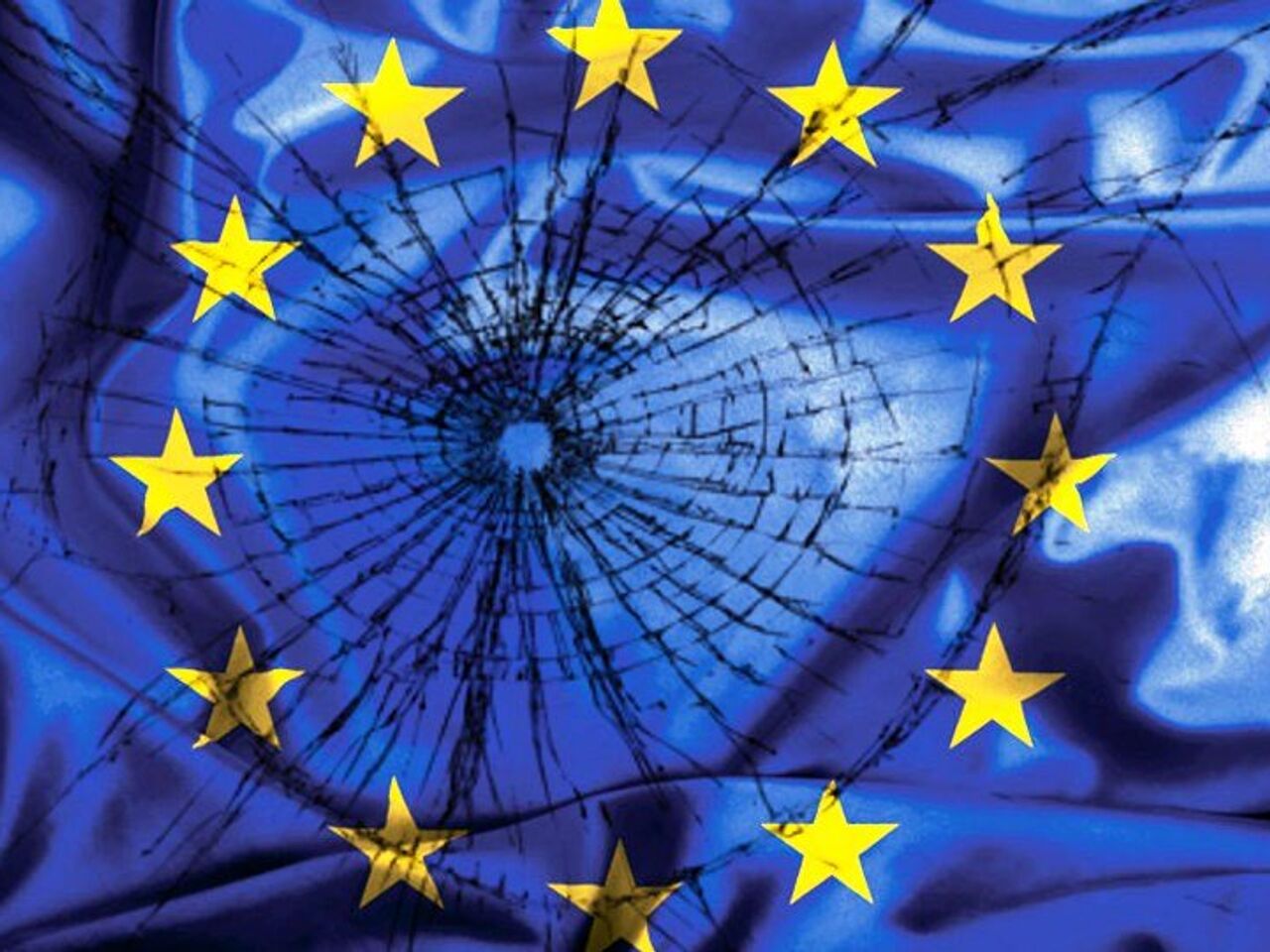Russia Sees Red Over Frozen Assets Dispute; The Escalating Tensions Between Russia And The EU Is A High Stake Brinkmanship Which May Be Costly For Global Peace
As contentious dispute looms over the potential use of profits generated from frozen Russian assets, the international arena is once again witnessing escalating tensions between Russia and the European Union (EU). The situation, marked by high-stakes brinkmanship, carries significant implications not only for these two major actors but also for the broader global arena.

The EU is contemplating a bold move – utilizing the profits from frozen Russian assets to aid in the reconstruction of war-torn Ukraine.
The step is seen as a means of holding Russia accountable for its actions of the full-scale invasion of Ukraine; however, the proposal has ignited a powder keg of economic concerns, with the European Central Bank warning of potential disruptions to financial markets and the stability of the euro as a reserve currency.
While the U.K. and the U.S., the G7 group of the biggest economies, have all expressed support for the EU’s idea, on the other side, Russia has vowed to retaliate by confiscating assets belonging to “unfriendly” EU nations, thus intensifying the dispute and threatening to strain diplomatic relations further.
Not So Easy
Vyacheslav Volodin, an ally of President Putin, however, made it clear that if the EU proceeds with its proposal, Moscow’s response will inflict more economic damage on the EU than the other way around.
He stated that a number of European politicians, led by European Commission President Ursula von der Leyen, have once again raised the prospect of appropriating Russia’s frozen funds to fund the militarization of Kyiv.
The EU And Russia’s ‘Frozen Assets’
According to von der Leyen, an official proposal is expected to be presented in early December, with EU finance ministers currently working on the underlying principles of this mechanism.
She indicated that the proposal would focus on finding a way to utilize the proceeds from assets that currently benefit a limited number of financial institutions in the European Union.
Most of the sanctioned assets are held in Belgium, with as much as €180 billion being held at Euroclear, the securities depository.
However, this idea faces technical challenges, with the European Central Bank warning that tapping into these earnings could incentivize other central banks to divest from euro-denominated assets, potentially weakening the euro itself.
The Background
European Union leaders had earlier approved the use of profits generated from frozen Russian state assets for the reconstruction of Ukraine; the decision was made on the final day of the European Council summit of EU leaders in Brussels.
In June, Ursula von der Leyen pledged to create a proposal for leveraging Russian state assets “before the summer break,” but such a proposal did not materialize due to concerns raised by the ECB and some member states.
The Commission then sought to secure a G7 statement on leveraging Russian assets for Ukraine to share the legal and financial risks of such a groundbreaking move with other major economies.
Despite EU attempts to facilitate this at recent gatherings of G7 justice and finance ministers, it did not come to fruition.
The Colossal Assets
Of the approximately $300 billion of Russian foreign reserves frozen at the outset of Moscow’s war on Ukraine, the majority—more than €200 billion—is located within the EU.
As Russian securities mature and are reinvested by financial intermediaries, they generate a profit; the EU has proposed taxing these profits for the benefit of Ukraine, but this idea faces opposition from the European Central Bank and some EU member states, including Paris and Berlin, (as mentioned before) due to concerns about potential disruptions in financial markets and the euro’s status as a reserve currency.
During a summit in Brussels, Commission President Ursula von der Leyen sought a mandate from leaders to formulate legal proposals, referencing support from G7 finance ministers.
Some EU member states, including the Baltic countries, Denmark, Sweden, Finland, and Poland, expressed support for the idea, while others, such as Belgium and Luxembourg, urged caution and consideration of the legal, macroeconomic, and monetary risks involved.
Belgian clearinghouse Euroclear holds €180 billion of Russian state assets and generated €3 billion in profits in the first nine months of the year.
Luxembourg is home to Clearstream, another clearinghouse currently holding frozen Russian securities.

The Viewpoint
The ongoing dispute between Russia and the European Union over the potential seizure of profits from frozen Russian assets has far-reaching implications for both sides; the high-stakes standoff raises significant economic, political, and strategic considerations.
Economically, the proposed move by the EU to utilize profits from frozen Russian assets for Ukraine’s reconstruction carries considerable risks.
It can potentially disrupt financial markets, particularly in Europe, as it may weaken the euro’s status as a reserve currency.
The European Central Bank’s concerns about these potential repercussions stress the delicate balance between supporting Ukraine’s recovery and safeguarding the stability of the European financial system.
Thus, the EU’s decision to move forward with this plan could influence how other central banks manage their assets in the euro, impacting the currency’s strength and attractiveness as a global reserve.
From a political standpoint, the dispute has once again deepened tensions between Russia and the EU and the threat of Moscow retaliating by confiscating assets of “unfriendly” EU nations adds a layer of complexity to an already strained relationship.
This tit-for-tat approach not only escalates the conflict but also can potentially affect diplomatic negotiations and international cooperation on various issues, including security, energy, and regional conflicts.

Moreover, the implications extend beyond the EU-Russia dynamics. The support shown by the United Kingdom, the United States, and the G7 for the EU’s proposal signifies a unified front among major Western powers. The united stance can be seen as an attempt to hold Russia accountable for its actions in Ukraine and sends a clear message that they are willing to confront Russia on multiple fronts.
On the other side, Russia’s vow to seize assets belonging to EU nations reflects it is willing to take bold steps to protect its interests and respond to what it perceives as hostile actions. The approach carries inherent risks, potentially alienating Russia further from the international community and aggravating its economic isolation.
The implications for Ukraine are also significant; while the EU’s plan aims to support Ukraine’s recovery, it might inadvertently complicate the situation.
Ukraine could find itself at the center of a broader geopolitical struggle between Russia and Western powers, potentially facing the consequences of the tit-for-tat actions between Moscow and the EU.
The Deepening Global Crises
This standoff stresses the deepening divide between Russia and the EU, and its repercussions are felt not only in their bilateral relations but also on the broader stage of international politics.
In this context, it’s crucial to study the implications of this dispute, which extend beyond economic consequences and include the current political, diplomatic, and geopolitical dimensions shaping the course of international affairs.
Moscow is ready to reciprocate should the European Union proceed with its intention to utilize the profits from frozen Russian assets, as cautioned by a high-ranking Russian official closely associated with President Putin; should the EU move forward with the proposal, Moscow will respond by seizing the assets of “unfriendly” EU nations, potentially causing more economic harm to the EU.






